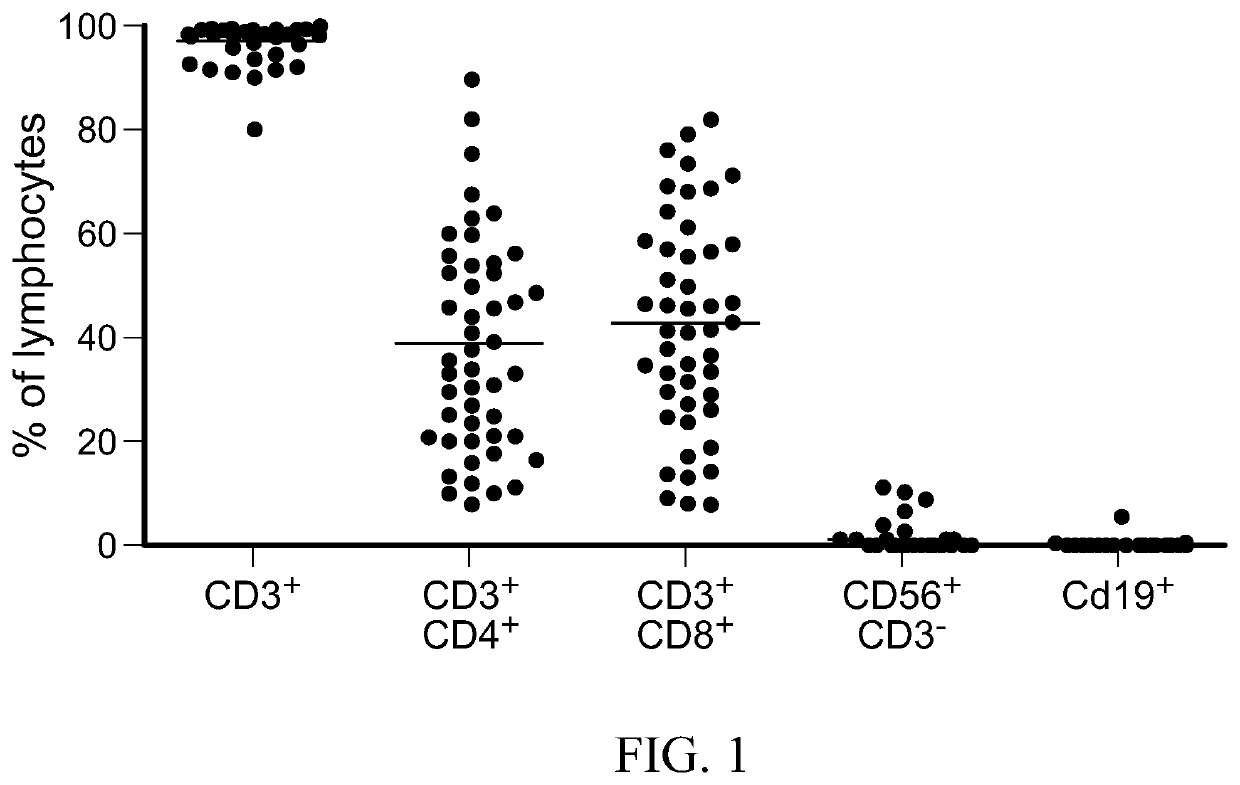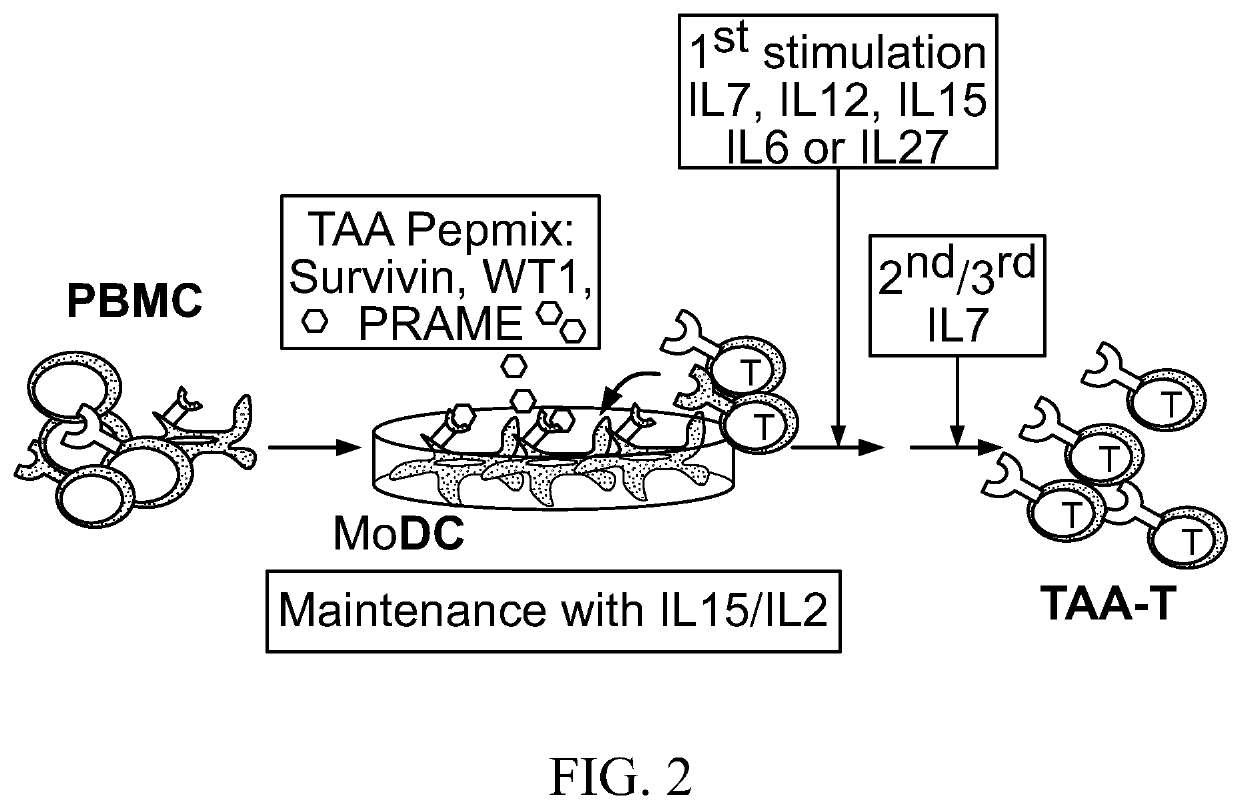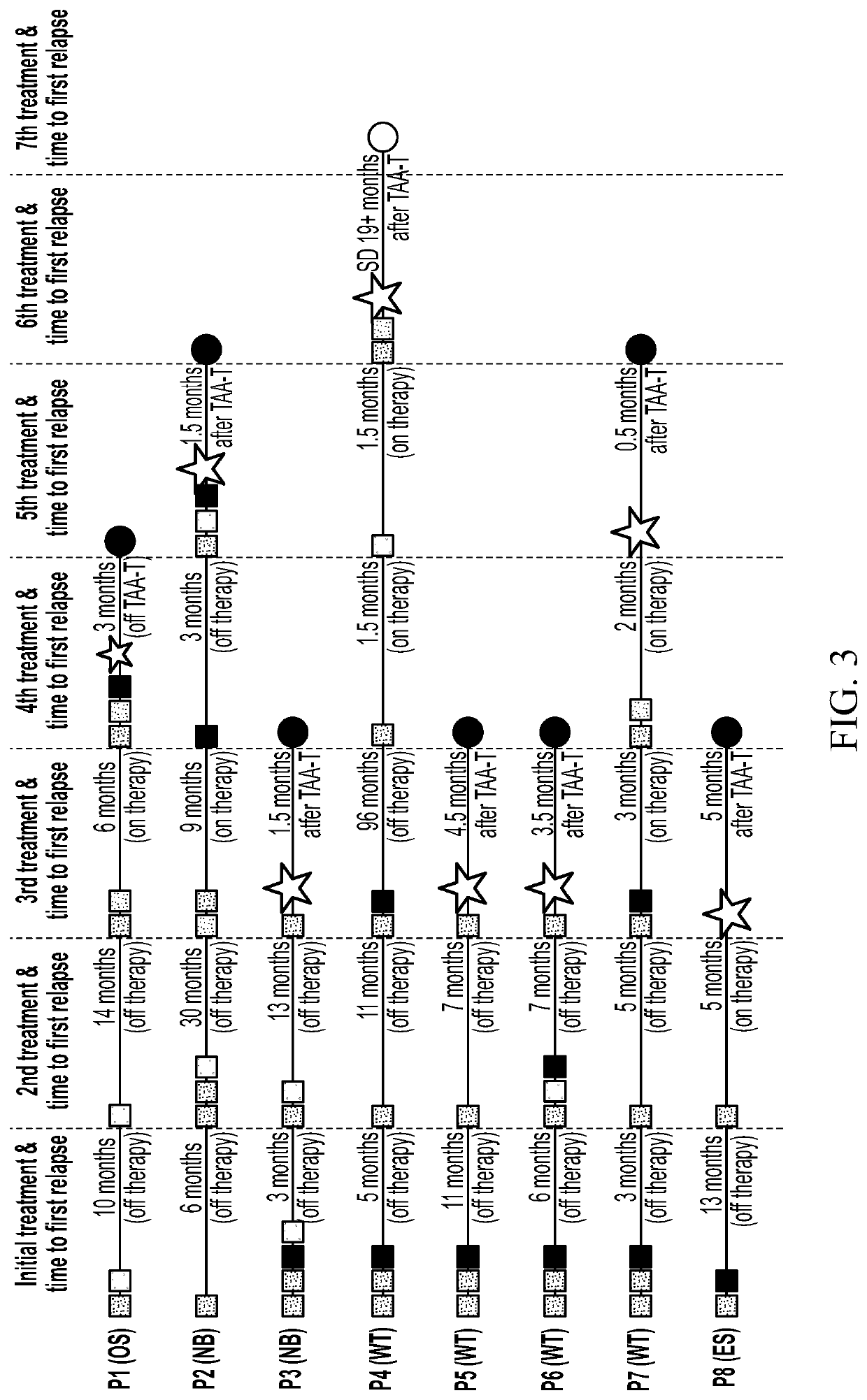Fixed ratio ex vivo activated mixed lymphocyte products for use in the treatment of cancer
a lymphocytic therapy and mixed lymphocyte technology, applied in the direction of antibody medical ingredients, drug compositions, immunological disorders, etc., can solve the problems of limited efficacy, difficult process of obtaining consistently reproducible products, and high heterogeneous end products, so as to enhance the ability of administered cells, broad biological effect, and effective and robust immune respons
- Summary
- Abstract
- Description
- Claims
- Application Information
AI Technical Summary
Benefits of technology
Problems solved by technology
Method used
Image
Examples
example 1
rapy of Relapsed and Refractory Solid Tumors with Ex-Vivo Expanded Non-Fixed Ratio Multi-Antigen Associated Specific Cytotoxic T Lymphocytes
[0242]Patients and Treatment Protocol
[0243]A phase 1 dose escalation trial was conducted to determine the safety of administering non-fixed ratio tumor-associated antigen cytotoxic T cells (TAA-T) targeting WT1, PRAME, and survivin to patients with high-risk solid tumors defined as refractory, relapsed or with residual detectable disease following conventional therapy. The TAA-T products administered in this trial were manufactured as described in Example 2 below and characterized with respect to tumor antigen specificity and the in vivo cytokine and lymphocyte cellular milieu pre- and post-infusion as described in Example 3. Disease response was evaluated following TAA-T therapy within the context of a phase 1 trial. Patients with high risk solid tumors reported to express one or more target tumor antigens (WT1, PRAME, and / or survivin) were eli...
example 2
re of Non-Fixed Ratio TAA-T Products
[0254]Non-Fixed Ratio TAA-T products from patients having solid tumors were generated according to Good Manufacturing Practices appropriate for a phase I study. A total of 100-120 mL of peripheral blood was collected on 2 occasions to generate antigen-presenting cells. For patients weighing less than 25 kg, each collection volume was reduced to 3 mL / kg. Subsequent collections were permitted for patients eligible to continue on therapy but without additional cell doses.
[0255]Non-fixed ratio TAA-T products were generated from total human blood peripheral mononuclear cells (Step 1). Matured dendritic cells (DCs) were harvested and used as antigen presenting cells (APCs) and peptide-pulsed with a mix of three peptide libraries for WT-1, Survivin, and PRAME (Step 2). Lymphocytes were initially stimulated using a cytokine mix containing IL-7, IL-12, IL-15, IL-6, and IL-27 (Step 3). Subsequent stimulation (Steps 4 and 5) were performed using irradiated D...
example 3
ization of Non-Fixed Ratio TAA-T Products
[0272]Flow Cytometry
[0273]Non-fixed ratio TAA-T products derived using the procedure of Example 2 above were phenotyped by extracellular antibody staining with anti-CD3, CD4, CD8, CD45, CD19, CD16, CD56, CD14, CD45, CD83, HLA-DR, TCRαβ, TCRγδ (Miltenyi Biotec, Auburn, Calif.) and analyzed on MACSQuant Analyzer10 Flow Cytometer. Annexin-V and PI antibodies were used as viability controls, and data analyzed with FlowJo Flow Cytometry software (Treestar, Ashland, Oreg., USA). The phenotyping results for the non-fixed ratio TAA-T products generated from patients are shown in FIG. 4A and FIG. 4B, which indicates a variability in lymphocytic cell types.
[0274]ELISpot
[0275]Antigen specificity of the non-fixed ratio TAA-T products derived using the procedure of Example 2 above was tested via Interferon-Enzyme-Linked Immunospot (IFNγ ELISpot) assay. See Weber G, Caruana I, Rouce R H, et al. Generation of tumor antigen-specific T cell lines from pediatr...
PUM
| Property | Measurement | Unit |
|---|---|---|
| Fraction | aaaaa | aaaaa |
| Fraction | aaaaa | aaaaa |
| Fraction | aaaaa | aaaaa |
Abstract
Description
Claims
Application Information
 Login to View More
Login to View More - R&D
- Intellectual Property
- Life Sciences
- Materials
- Tech Scout
- Unparalleled Data Quality
- Higher Quality Content
- 60% Fewer Hallucinations
Browse by: Latest US Patents, China's latest patents, Technical Efficacy Thesaurus, Application Domain, Technology Topic, Popular Technical Reports.
© 2025 PatSnap. All rights reserved.Legal|Privacy policy|Modern Slavery Act Transparency Statement|Sitemap|About US| Contact US: help@patsnap.com



